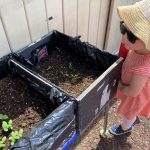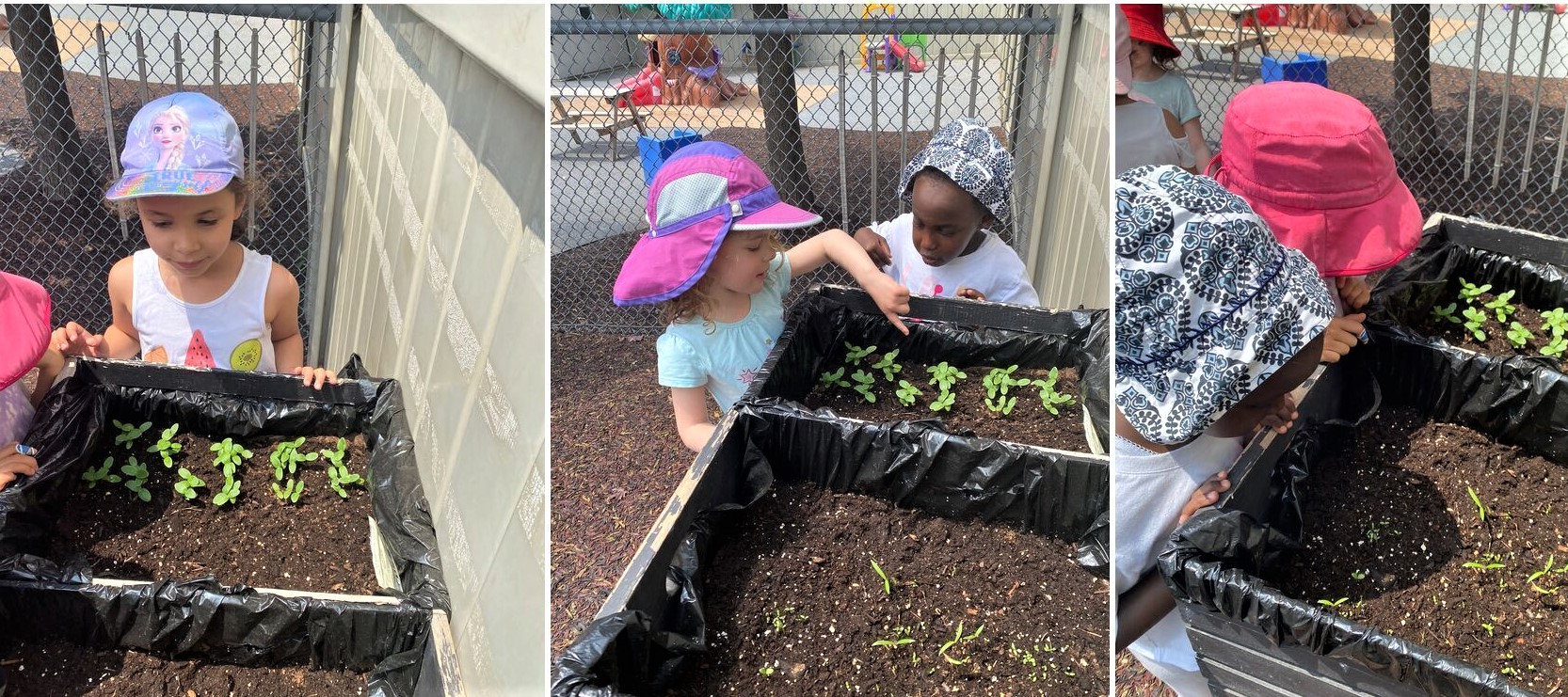Gardening With Kids: 7 Lessons They Learn
Gardening With Kids: 7 Lessons They Learn
At Alpha’s Discovery Kids, encouraging growth and development is what we do best. Our students have become very involved in tending to classroom plants. We have made it a seasonal tradition to create an outdoor garden with our preschoolers. They love digging and planting at the beginning of the season, watching the growth and then picking the vegetables during the middle of the season. All the knowledge they gain throughout the process will stay with them for years to come. The learnings will shape them as they grow into adults who will one day be responsible for their own little place in the world. When children help in the garden, they begin to understand what it takes to grow. They begin to understand that plants need water and food just like they do.
7 Lessons children learn from gardening
 Engages all the senses–Gardening can be a complete sensory experience for kids. Growing plants isn’t about just digging in dirt, although that’s a great way to experience using the touch sense, but kids can use all their other senses while learning how to grow their own food. Sight, taste and smell comes into play when they get to experience the aromas and tastes of what they have harvested.
Engages all the senses–Gardening can be a complete sensory experience for kids. Growing plants isn’t about just digging in dirt, although that’s a great way to experience using the touch sense, but kids can use all their other senses while learning how to grow their own food. Sight, taste and smell comes into play when they get to experience the aromas and tastes of what they have harvested.
Encourages healthy eating–Learning to grow your own food encourages you to eat it. As you and your family eat more and more fruits and vegetables as your garden produces, they may be experiencing new foods for the first time and discovering new favorite foods too.
Life cycles-Big lessons can be learned in the garden about life and the lifecycle of plants, bugs and animals. From new baby rabbits (that you want to keep out) to mature bees carrying honey back to the hive and to the life of the plants themselves, they can literally watch life happen in the garden.
Bugs are useful-Gardening shows kids how useful bugs are in the world. They begin to understand that even earthworms have a place in the circle of life. Learning these things can help make bugs seem less scary.
Nurturing & Responsibility-These two are technically different skills but they really go hand-in-hand. Helping plants grow teaches kids how to nurture a little life and it teaches them responsibility since they will have to help water and feed the plants. Remembering to do this and helping adults keep an eye on the plants is a big responsibility for children. They love to watch as their hard work pays off and the garden vegetables grow.
Family bonding– Gardening is a family experience. Everyone can gets involved on some level. It’s fun for us to do it together and experience growing food or plants. Not only is it fun but it gives us a chance to teach kids so much and that’s fulfilling for us and them.
Gardening is good for the soul-Gardening gives us a chance to pause and get back to nature. Nature has a way of calming us. No screens are involved so that’s a big bonus. It’s a time out from the rest of life when they just get to concentrate on the dirt between their fingers.
Halloween Safety Tips 2021
Halloween Safety Tips
Halloween can be scary in more ways than just scary costumes and music. There are many safety risks to consider before heading out on Oct 31st– Here are a few safety tips to keep in mind on Halloween night to keep your little ones safe.
#1 2021 SAFETY RULE is to be sure to follow all public health safety guidelines
To let others know you are following safe Halloween practices during the pandemic you can display a red pumpkin on your costume or at your door. Click here to read more about the red pumpkin campaign
#2 Trick or treating with Toddlers and children under 5
Most toddlers have no idea what is going on and some dislike wearing a costume. As parents, we enjoy watching them dress up in their cute costumes and experiencing some of the excitement that Halloween offers. The best advice is baby steps for toddlers and children under 5 years and follow these tips:
- Head out early when its still light enough for them to see others and to be seen.
- Check out local day time events and avoid the spook.
- Go to homes you know and can guarantee there will not be any scary surprises.
- Your little one will likely enjoy handing out candy just as much as trick or treating.
- Don’t’ forget to remind them to use their manners – PLEASE & THANK YOU.
#3 Costume Safety
- All costumes, wigs and accessories should be fire-resistant.
- If children are allowed out after dark, fasten reflective tape to their costumes and bags, or give them glow sticks or flashlights.
- Avoid masks for younger children. It’s better to use face paint to create the effect and allows them to see better.
#4 Safe Treats
- Don’t eat candy until it has been inspected at home.
- Eat a snack before heading out to avoid the temptation of nibbling on a treat before it has been inspected.
- In case of a food allergy, check the label to ensure the allergen isn’t present. Tell children not to accept—or eat—anything that isn’t commercially wrapped.
- Parents of very young children should remove any choking hazards such as gum, peanuts, hard candies, or small toys from the Halloween bags.
- Inspect commercially wrapped treats for signs of tampering, such as an unusual appearance or discoloration, tiny pinholes, or tears in wrappers. Throw away anything that looks suspicious.
# 5 When They’re on the Prowl
Here’s a scary statistic to keep in mind: Children are more then twice as likely to be hit by a car and killed on Halloween than on any other day of the year. Lack of visibility because of low lighting at night also plays a factor in these incidents.
- A responsible adult should accompany young children on the neighborhood rounds.
- Children and adults are reminded to put electronic devices down and keep heads up and walk.
- Practice safety rules at home and set clear distance boundaries. Role play and make sure children know the dangers because the excitement of the night and a little sugar can turn a fun night into a scary one if you are not careful.
- Have Fun!
Click here for some fun Halloween Activities to do with your child – even if you decide to stay in for the night!


